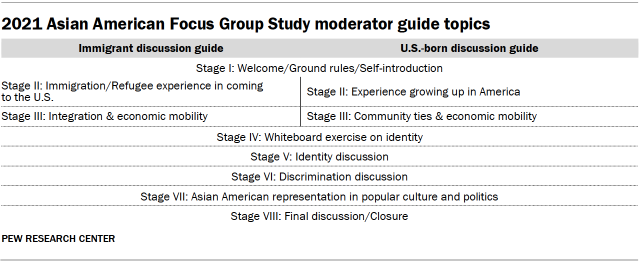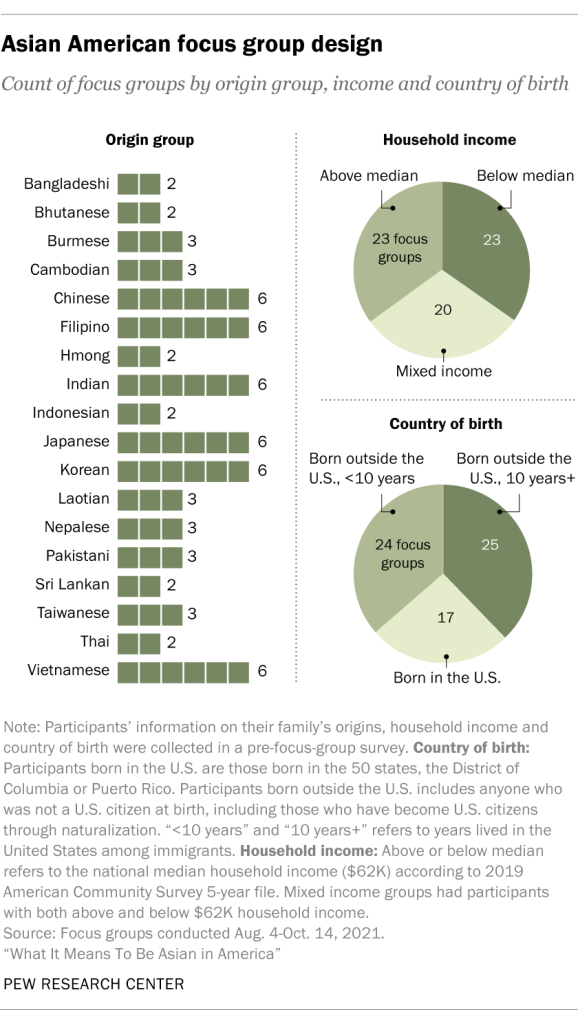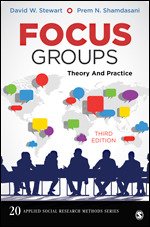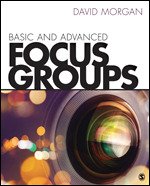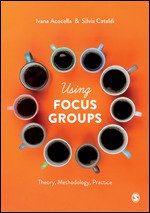Focus Group Methods for Research about Being Asian in America
The post caught my eye: 66 focus groups in 18 languages. I followed the link to learn more about this extraordinary Pew Research Center study about the Asian American lived experience. One thing led to another, and Neil Ruiz (@neil_ruiz), Associate Director of Race and Ethnicity Research for the Pew Research Center, generously gave permission for Methodspace to share excepts of the the methodology and findings with our readers. I also asked a couple of follow-up questions, and Dr. Ruiz’s answers are included in this post.
This material offers a robust example of a large-scale qualitative study, as well as examples for using videos and interactive applications to disseminate research findings. Visit the Being Asian in America research project site to learn more about this and other studies about race and ethnicity, and to sign up for the monthly Race & Ethnicity Newsletter.
- Janet Salmons, Research Community Manager for Methodspace
Why and how was this study conducted? Purpose and methodology.
Purpose of the study
The Pew Research Center is committed to providing a more complete picture of all people who live in the United States. One reason for doing this study is that there has been a major data gap on Asian Americans in the world of survey research even though Asian Americans are a diverse and growing population. Pew conducted this project to capture the diverse voices and experiences of Asian Americans and understand what it means to be Asian in America.
Another reason for using focus groups is that it’s virtually impossible to use traditional survey methods to capture the attitudes of some subgroups within the U.S. Asian population. Overall, Asian Americans account for only about 7% of the U.S. population, and within that 7% are much smaller subgroups, including Bhutanese, Hmong and Laotian Americans, who each make up 2% or less of all Asians living in the United States.
Also, many Asian Americans are immigrants who hail from countries with a wide range of languages and culture. That means it would be costly to create a written survey that can be taken in so many different languages. For these reasons and others, it remains a challenge to survey Asian Americans with traditional survey methods.
Rationale for a study using focus groups to collect data
Pew Research Center is known for its surveys. Focus groups were chosen because this study aimed to expand the depth and breadth of our understanding of racial and ethnic identity by asking Asian Americans to describe their attitudes and experiences in their own words, without preset response options.
The groups
Pew conducted 66 online focus groups with 264 adult participants from across the United States from Aug. 4 to Oct. 14, 2021. Recruited participants came from 18 Asian origin groups. Each person was offered an incentive amount of $175 to participate. Focus groups were 2 hours in length with 15 minutes allocated to introductions, warm-up questions and debriefs.
The topics for discussion during the focus groups were as follows:
Researchers created two broad moderator guides on these topics listed in the table above, one for focus groups made up of U.S.-born Asians and another for focus groups made up of immigrant Asians. Guides for immigrant Asian focus groups were translated into 17 non-English languages. (You can find the moderator guides for immigrant focus group discussions here and for U.S.-born focus group discussions here.
Study design and group criteria
For each focus group, six participants were recruited while four were ultimately selected to participate. The research team overrecruited participants to account for “no-shows,” as well as participants who may experience technical issues that prevent participation.
The study included focus groups from 18 distinct Asian origin groups. These included participants from the six largest Asian origin groups (Chinese, Indian, Filipino, Japanese, Korean and Vietnamese) which made up 85% of the national Asian American population in 2019. The study also included participants from 12 smaller origin groups (Bangladeshi, Bhutanese, Burmese, Cambodian, Hmong, Indonesian, Laotian, Nepalese, Pakistani, Sri Lankan, Taiwanese and Thai). These ethnic origin groups were selected for the study to include the voices of those from smaller populations.
Pew further sorted focus groups by nativity – that is, whether participants were born in another country or born in the United States. For immigrant participants, we grouped them by how long they have lived in the U.S. – more or less than a decade. They also grouped participants by their household income – above or below $62,000 a year, the median household income of the overall population in the U.S. We did this in part because there is so much variation in household income among Asian Americans.
Data analysis
The conversations among group participants were conducted virtually and were video recorded, transcribed, and translated into English for immigrant focus groups. The final data sent to Pew Research Center was anonymized.
Researchers coded 7,920 minutes of discussion. Researchers used ATLAS.ti to summarize participants’ responses to the questions they were asked, using coding schemes to highlight key themes and points of interest in the conversations, as well as the dynamics of the discussion. For example, we coded topics and subtopics to identify the factors shaping identity among our respondents.
We took particular care to ensure that the viewpoints expressed in our report accurately captured the range of opinions expressed by our focus group participants – emphasizing not just majority opinions, but minority opinions as well. - Neil Ruiz
This exercise allowed Pew to use ATLAS.ti to sort and display all the relevant quotes from the focus groups for the specific topics being analyzed, as well as identify the demographic characteristics of those who said them. Researchers took particular care to ensure that the viewpoints expressed in our report accurately captured the range of opinions expressed by our focus group participants – emphasizing not just majority opinions, but minority opinions as well.
Read more about the coding, data analysis and interpretation here.
Dig into some of the data!
You can read and sort data collected from focus group participants using the interactive quote sorter. Find excerpts of participants’ respondes to the question “What does it mean to be [Vietnamese, Thai, Sri Lankan, Hmong, etc.] like yourself in America?” This interactive allows you to sort quotes from focus group participants by ethnic origin, nativity (U.S. born or born in another country), gender and age.
Hear their stories! Video documentary and interviews.
This video documentary complements the focus group study, featuring participants who were not part of the focus group study, but were similarly sampled to tell their own stories about being Asian in America. Additional interview responses from individuals go into more depth; you can access them here.
Two follow-up questions about the study
JS. In academic researchers ethics reviewers want participants to be fully anonymous. But your documentary and interview recordings show participants. Was the desire to show and name participants the reason why you interviewed people who had not participated in the focus groups?
NR. Yes, you are correct that the documentary participants were not also focus group participants. Pew Research Center wanted to further illustrate the themes that arose out of our focus groups through a documentary, and to have participants from a variety of regions in the U.S. So, to honor the privacy of our focus groups participants, we separately recruited documentary participants. We worked with a vendor and used similar tactics to sample participants for each.
JS. What platform did you use for the online focus groups?
NR. We actually used several platforms to ensure that participants could partake regardless of their internet bandwidth. We also made decisions along the way if we felt like a particular platform wasn’t working as well as we would have liked.
SAGE books about collecting data with focus groups and interviews
Use the code MSPACEQ322 for a 20% discount from 1 July – 30 September.
Using Focus Groups Theory, Methodology, Practice by Ivana Acocella, Silvia Cataldi (2020)
Doing Focus Groups Second Edition by Rosaline Barbour (2018)
Focus Group Methodology: Principle and Practice by Pranee Liamputtong (2011)
Basic and Advanced Focus Groups by David L. Morgan (2018)
Focus Groups Theory and Practice, Third Edition by David W. Stewart, Prem N. Shamdasani (2014)


